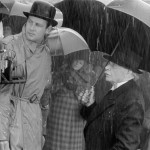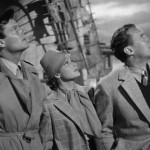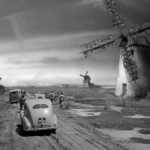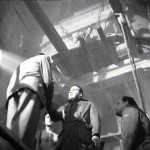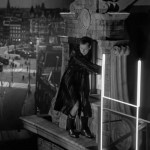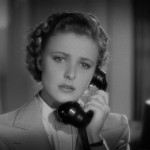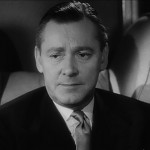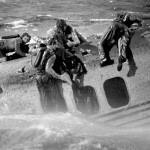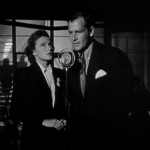
Foreign Correspondent – 1940
You can rarely go wrong with Hitchcock and Foreign Correspondent is no exception. First of all, the man was a genius. This movie had special effects, which I never saw. And that is the point of a special effect. If you notice it for what it is, it hasn’t done its job properly. He was great at casting and knew how to use the camera and the lighting to wonderful effect.
The DVD came with a few documentaries which I watched. One was about Hitchcock’s visual effects, but the other was about propaganda films during WWII. Both were interesting to watch and I learned a few fascinating facts. For example, during the Second World War, the US Government never demanded that Hollywood make propaganda films, but it did ask very politely.
I only mention this fact because Hitchcock, while he grew up in England, was an American film maker. When the government wanted movies to promote involvement in the war, especially after the attack on Pearl Harbor, Hitchcock knew that he did not want to make a propaganda film. However, many people consider Foreign Correspondent to be his most overt example of one.
I happen to think that they are right, but it was subtle most of the time, so I didn’t really notice it on a conscious level. The story took place right before the start of the war. American journalist, Johnny Jones, played by Joel McCrae, is given the assignment to travel to London and find out what was really happening, and whether or not there would really be war.
The point is made that he knows nothing of the events taking place in Europe, which is the singular quality that made him the right man for the job. His boss has him change his pen name to a more sellable one, Huntley Haverstock. He is to meet with Steven Fisher, head of the Universal Peace Party, wonderfully played by Herbert Marshall.
At an event in honor of Dutch diplomat Van Meer, played by Albert Bassermann, Haverstock meets Fisher’s daughter, Carol, played by Laraine Day. He immediately falls completely in love with her. When Van Meer is murdered in public, Carol’s friend Scott Ffolliott, a British reporter played by George Sanders, shows up to help Johnny solve the case.
What follows is a wonderful and engaging spy story full of assassination attempts, overheard conversations, lies, deceptions, romance, car chases, a plane crash, and the start of a world war. The spy story was strong enough to stand on its own, meaning that it didn’t revolve around the beginning of the war. And yet, it was an ever present danger that loomed over the entire thing, casting its ominous shadow on each of the characters. The character of Jones is transformed from an apathetic average American to a passionate activist, doing his part to help the Allies in the world-wide conflict.
The final scene was the most overtly propagandistic. The war has begun and Jones is now doing a radio broadcast from a British radio studio. During his speech, sirens begin to sound and bombs can be heard exploding all around the studio. The lights flicker out, and still Johnny stays at his post, telling the world to become aware of what Germany is doing and urging his listeners to get involved.
I mentioned the special effects earlier, but I’d like to go into two of them that were amazingly done in innovative ways that surprised me for a movie made in 1940. First, there was the scene where a car drove off into the distance in a field containing two windmills. But apparently, the background was a matte painting. What really sold the illusion was the fact that the windmills were turning! How was that done? Easy. The turning windmills were stuck through the painting. The cars were filmed driving away from the camera, and the painting was composited over the studio lot or wherever the car was being filmed.
Second, there was a shot from the cockpit of an airplane as it crashed into the Atlantic Ocean. For this shot, a mock-up of a cockpit was built. In front of it was a rear-projection screen made of rice paper playing footage of a stunt pilot diving straight at the water. Right when the plane would have hit the surface, water was shot through the screen and into the cockpit. It happened so quickly and was timed so perfectly, that you didn’t see the paper screen being ripped apart. Genius.
